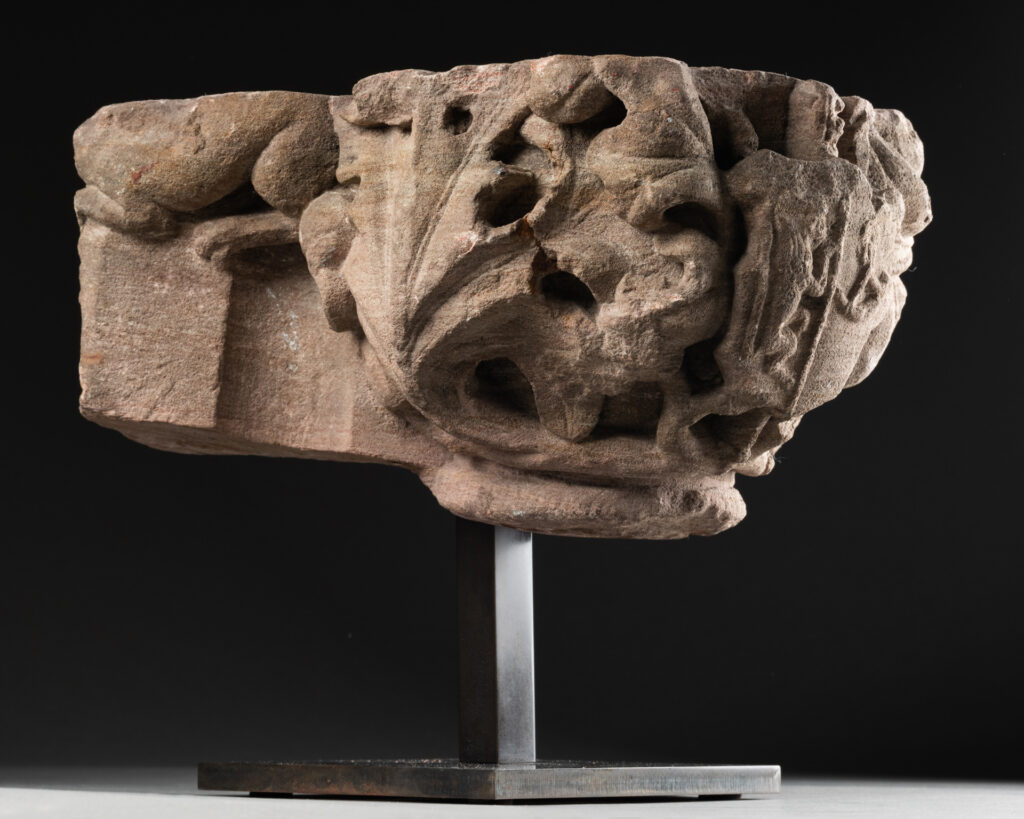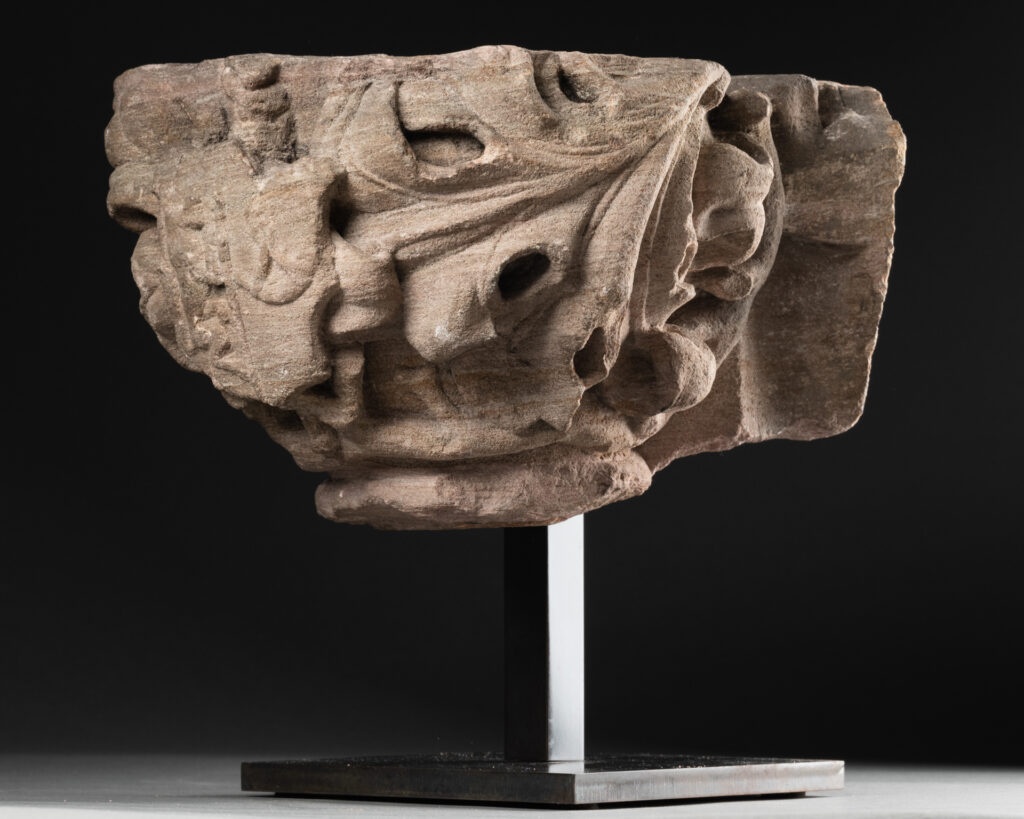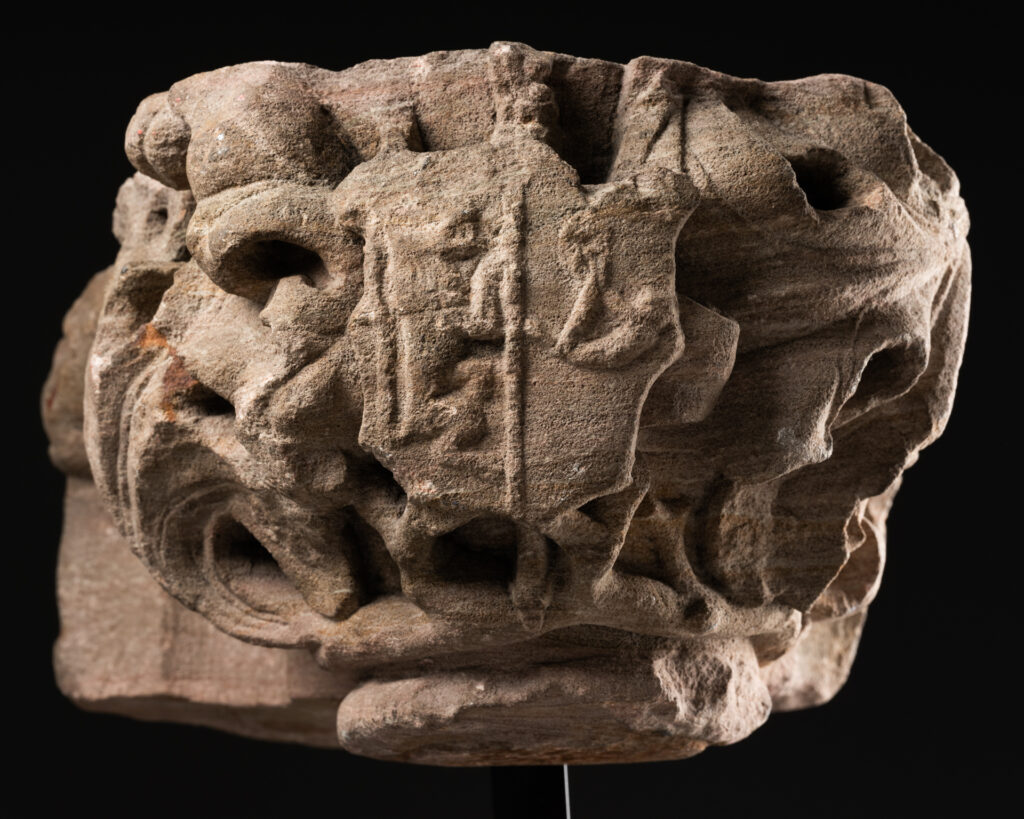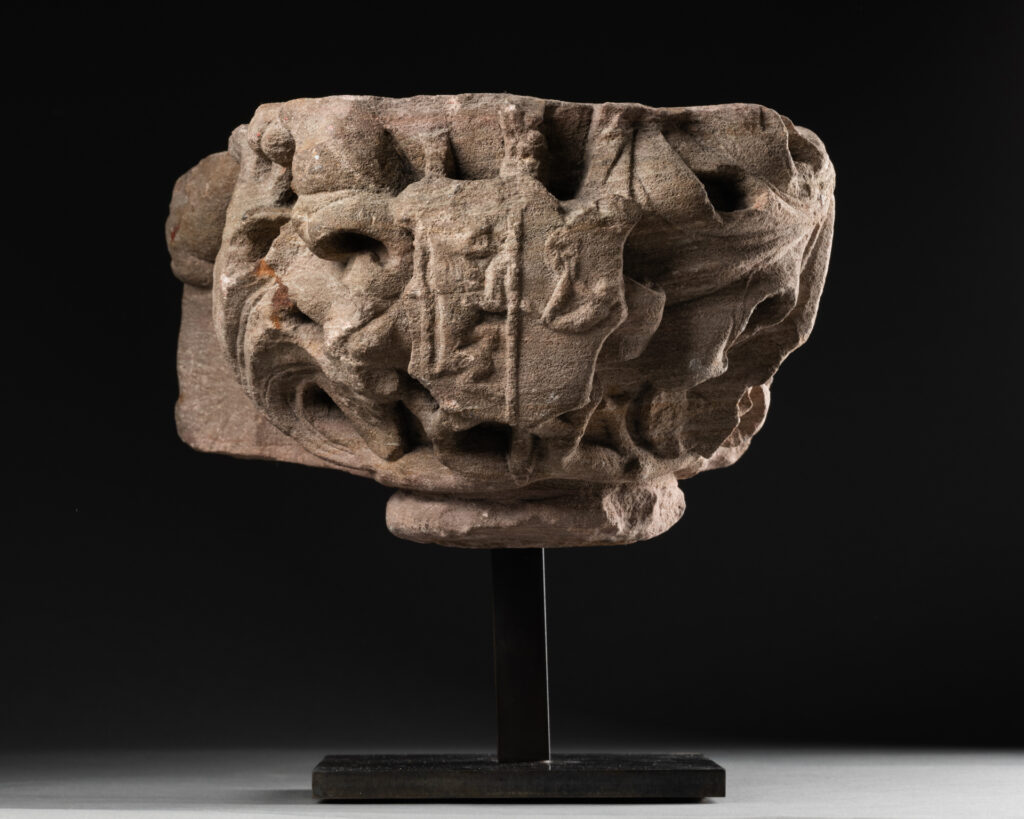This beautiful piece of architecture is carved in pink Vosges sandstone. This material is emblematic of Alsace and the Upper Rhineland. Its name comes from the place where it is extracted, in the Vosges sandstone region. Numerous buildings are constructed in this stone, including Strasbourg’s famous cathedral. Its pinkish tone and fine grain are highly appreciated for construction.
It is most likely part of a column, as suggested by the beginning of the shaft, or more precisely, a piece of its capital. The latter features a plant motif with a coat of arms at its center. We can also make out the body of an animal on the left (front view), probably a dog.
On the left side of the shield is an animal standing on its two paws, showing its claws and teeth: in heraldry, this is a greyhound rampant. The greyhound is a dog
a graceful-looking hunting bird with a symbolism of loyalty. He faces a hunting horn, an instrument representing courage and ardor in heraldry. It seems that behind the coat of arms runs a pastoral staff, a symbol of the prior’s baton, the end of which is missing today.
In the Grand Est region, between the towns of Colmar and Mulhouse, one church bears the greyhound emblem: Murbach Abbey. One of the villages surrounding Murbach has its own hunting horn emblem. This information, added to the building’s location, tends to prove a link, close or distant, between the place and our piece of architecture.




